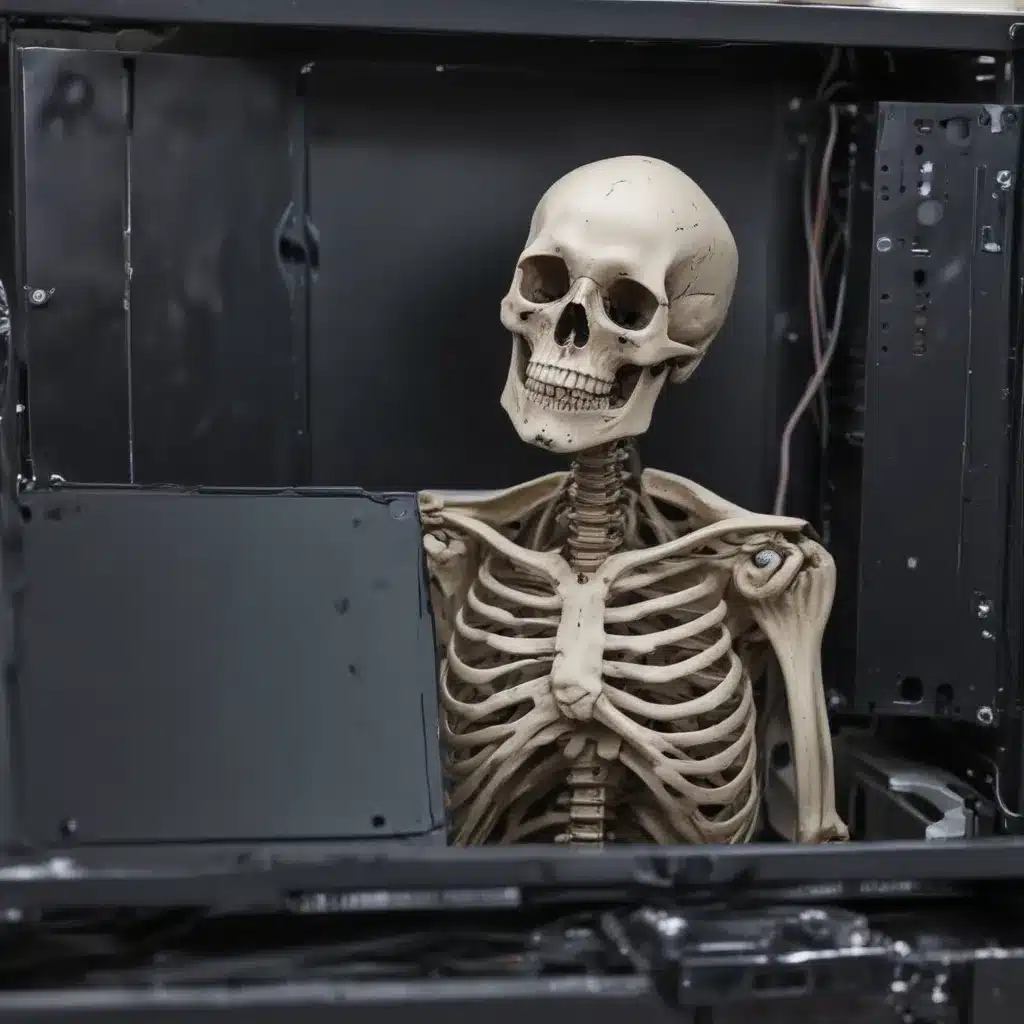The Nightmare Scenario
Oh, the dreaded moment when your beloved PC decides to take its last breath, leaving you in a state of pure panic. As a self-proclaimed tech enthusiast, I’ve been there, done that, and let me tell you, it’s not a pretty sight. The other day, my parents’ ancient Windows 10 machine decided to call it quits, and my dad was devastated – there was a precious Word document he simply couldn’t live without.
If you find yourself in a similar situation, fear not! Today, I’m here to guide you through the process of recovering data from a dead PC, drawing on my own experiences and the wealth of knowledge I’ve gathered from various online sources. [1] [2] [3] [4] [5] [6] [7] [8]
Troubleshooting the Culprit
The first step is to identify the root cause of the problem. Is it a power supply issue? A faulty motherboard? Or perhaps a logical error on the hard drive itself? Whatever the reason, we need to approach the situation methodically.
One of the easiest things to try is booting your PC in Safe Mode. In Windows 7 and earlier, simply press the F8 key repeatedly during the boot process. For Windows 8 and beyond, it’s F8 or Shift+F8. [1] If you manage to get into Safe Mode, you can then use Windows Explorer to locate and copy your files to an external drive.
Another nifty trick is to boot from a live Linux USB or CD/DVD. [1] This allows you to bypass any Windows-specific issues and directly access the hard drive, potentially retrieving your precious data. Just make sure to create a bootable Linux drive ahead of time, as optical drives are becoming a rarity these days.
Turning the Hard Drive into an External Device
If the above methods don’t work, it’s time to get a bit more hands-on. Remove the hard drive from your PC and turn it into an external device using a SATA-to-USB adapter. [1] This way, you can connect the drive to another computer and hopefully access the data.
Once the drive is connected, open the Disk Management tool on the host computer. [1] If the system detects the drive but it’s inaccessible, you’ll need to assign a new drive letter to the disk volume. Just right-click the drive, select “Change Drive Letters and Paths,” and choose an available letter.
Bring in the Reinforcements
If you’ve exhausted all your DIY options and still can’t seem to recover your data, it’s time to bring in the heavy artillery – a professional data recovery tool. One such tool I’ve had great success with is Kernel for Windows Data Recovery. [6]
This powerful software can repair, recover, and restore data from corrupt Windows partitions and severely damaged drives. It can retrieve deleted files, Office documents, emails, and even media files. What’s more, it has a handy “File Trace” mode that performs a detailed, sector-by-sector scan of the hard drive, leaving no stone unturned.
The process is straightforward: select the appropriate scan mode, choose the drive you want to recover, and let the tool work its magic. Once the scan is complete, you’ll be able to preview the recovered items and selectively save the ones you need. [6]
Backup, Backup, Backup!
As the old saying goes, “an ounce of prevention is worth a pound of cure.” In the world of data recovery, this couldn’t be truer. The best way to avoid the heartache of a dead PC is to regularly back up your important files.
Whether you opt for a cloud-based solution, an external hard drive, or a good old-fashioned USB flash drive, having a reliable backup system in place can save you from a lot of stress and headaches down the line. [8] Trust me, it’s a small price to pay for the peace of mind you’ll enjoy.
Wrapping Up
Recovering data from a dead PC can be a daunting task, but with the right tools and a bit of persistence, it’s definitely achievable. From booting in Safe Mode to using a professional data recovery tool, I’ve covered a range of techniques to help you get your files back.
Remember, data recovery is a delicate process, so tread carefully and don’t hesitate to seek professional help if you’re unsure. And above all, make backing up a regular habit – it’ll save you a world of trouble in the long run.
Good luck, and happy data hunting!
References
[1] Knowledge from https://www.youtube.com/watch?v=ELfPmQ7BIag
[2] Knowledge from https://answers.microsoft.com/en-us/windows/forum/all/recovering-user-files-from-old-hard-drive-from/9c471a09-8731-4981-9e1a-575314c5e262
[3] Knowledge from https://www.youtube.com/watch?v=FxmnKAX8w1I
[4] Knowledge from https://www.reddit.com/r/computers/comments/vaaprj/best_way_to_get_data_off_the_hdd_of_a_dead_pc/
[5] Knowledge from https://www.youtube.com/watch?v=jaFI80h_rYk
[6] Knowledge from https://www.nucleustechnologies.com/blog/top-5-ways-to-recover-data-from-dead-computer/
[7] Knowledge from https://www.stellarinfo.com/blog/3-methods-recover-data-dead-pc/
[8] Knowledge from https://www.popsci.com/broken-computer-repair-recover-data/













